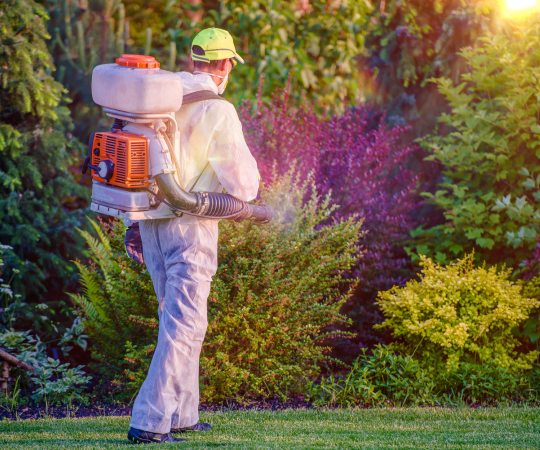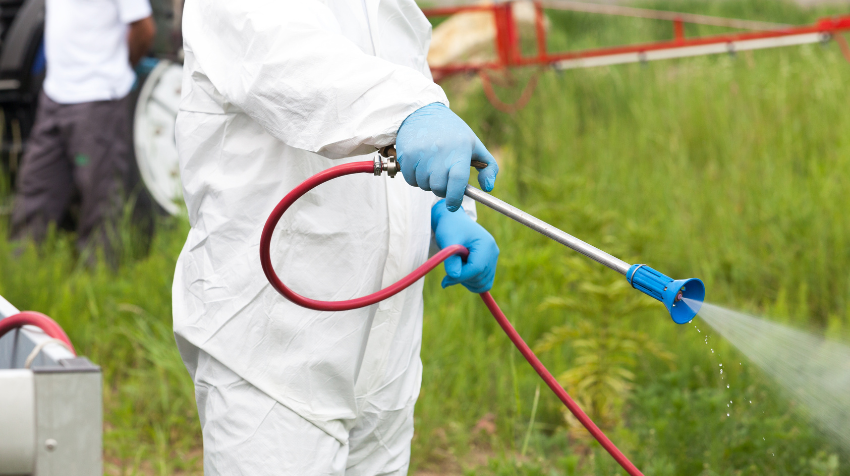Enhancing Tree Wellness: A Must-Read Guide to Proactive Pest Control
Do you ever wonder why your trees look unhealthy or are not growing as they should? One of the most common reasons for tree damage is pest infestation. Trees can be vulnerable to various pests and diseases, which can significantly impact their health and growth. However, there is a solution: proactive pest control.
Proactive pest control involves taking preventative measures to protect your trees from potential pest infestations. By identifying common tree pests and diseases, implementing prevention techniques, and monitoring your trees regularly, you can ensure that they remain healthy and vibrant for years to come.
In this guide, we will provide essential information on proactive pest control for healthier trees. So let’s dive in and learn how you can protect your beloved trees from harmful pests!
Understand the Importance of Proactive Pest Control for Trees
You need to know why it’s so important to take care of your trees and keep them healthy by protecting them from harmful insects. Trees are not only aesthetically pleasing, but they also provide a range of benefits such as shade, oxygen, and carbon sequestration.
However, pests and diseases can cause significant damage to your trees and compromise these benefits. Proactive pest control is essential for maintaining the health of your trees and ensuring they continue to thrive.
Pests can weaken a tree’s structure, making it more prone to breaking or falling over during storms or high winds. In addition, when a tree is weakened by pests or disease, it becomes an easy target for other predators like birds and rodents that can make things worse.
By taking proactive measures against pests and diseases, you can prevent these problems from occurring in the first place. Identifying common tree pests and diseases is the first step towards effective pest control management.
Identify Common Tree Pests and Diseases
Spotting the signs of common tree pests and diseases is crucial for keeping your trees healthy and thriving. Here are some key things to look out for:
- If you notice that your tree’s leaves are turning yellow or brown, it could be a sign of pest infestation or disease.
- Look for holes in the trunk or branches, as well as chewed or missing leaves. These are telltale signs of insect activity.
- Any unusual bumps, bulges, or growths on the tree could indicate a pest problem.
It’s important to note that different types of trees may be susceptible to different pests and diseases. Be sure to research the specific species of tree you have in order to identify any potential threats.
In order to prevent further damage from occurring, it’s essential to act quickly if you suspect a pest infestation or disease. The next section will cover effective prevention techniques for keeping your trees healthy and protected.

Prevention Techniques for Tree Pest Infestations
As you continue reading, discover effective ways to safeguard your trees from potential threats and ensure they stay vibrant and flourishing.
Preventing tree pest infestations starts with proper tree maintenance, such as regular pruning and fertilization. This promotes healthy growth and strengthens the tree’s natural defenses against pests. Additionally, removing dead or diseased branches can eliminate hiding spots for pests.
Another key prevention technique is monitoring your trees for signs of pest activity. Early detection allows for swift action before an infestation becomes severe. Regularly inspect your trees for any unusual discoloration or damage to leaves, bark, or branches. You can also use sticky traps or pheromone traps to catch pests before they cause serious harm.
By taking proactive measures to prevent pest infestations, you can help keep your trees healthy and thriving for years to come.
As you finish learning about prevention techniques for tree pest infestations, it’s important to note that sometimes even the most diligent efforts may not be enough to stop an infestation from occurring. In these cases, treatment options are available to eliminate the problem and restore your tree’s health.
Treatment Options for Tree Pest Infestations
When your trees become infested, don’t panic – there are treatment options available to save them and protect the environment they call home.
The first step is identification of the pest species as different pests require different treatments.
Once identified, you can choose between chemical or non-chemical options. Chemical treatments include insecticides, which can be applied through trunk injection or soil drenching methods, while non-chemical options may involve pruning infested branches or introducing predatory insects to control the pest population.
It’s important to note that while chemical treatments may offer a quicker solution, they can also harm beneficial insects and have negative effects on the environment.
Non-chemical options such as pruning and introducing predators take longer but are often more sustainable in maintaining a healthy ecosystem.
Whichever option you choose, it’s crucial to follow instructions carefully and monitor your trees closely for any signs of re-infestation.
This will be discussed further in the next section about monitoring your trees for pest infestations.
Monitoring Your Trees for Pest Infestations
To keep your trees healthy and thriving, you’ll want to monitor them regularly for signs of pests – this can help catch infestations early on and prevent further damage.
One way to monitor your trees is by inspecting the trunk, branches, leaves, and roots for any physical signs of damage or unusual growth patterns. You may also want to set up pheromone traps or sticky traps around your property to capture insects that are attracted to certain scents or colors.
Another important aspect of monitoring for pest infestations is keeping track of the weather conditions in your area. Factors such as drought, extreme heat or cold, or heavy rainfall can make trees more vulnerable to pests.
Additionally, be sure to keep an eye out for any changes in soil quality or drainage issues that could contribute to pest problems. By staying vigilant and taking preventative measures when necessary, you can help protect your trees from devastating infestations and ensure their continued health and vitality.
Conclusion: Take Action to Protect Your Trees from Pests
Don’t wait until it’s too late – take steps now to safeguard your trees from harmful insect infestations. As we’ve discussed, monitoring your trees regularly is the first step in identifying potential pest problems.
But once you’ve identified an issue, it’s important to act quickly and decisively to prevent further damage. There are a variety of proactive measures you can take to protect your trees from pests.
One option is to use natural predators or parasites that feed on the insects causing damage. Another is to apply pesticides or insecticides specifically designed for the type of pest affecting your tree.
Additionally, maintaining healthy soil and proper watering techniques can help strengthen your tree’s natural defenses against pests. By taking these steps, you can ensure that your trees remain healthy and vibrant for years to come.
Frequently Asked Questions
Can proactive pest control methods harm the environment or other wildlife in the area?
Did you know that nearly 75% of pesticides used in agriculture end up contaminating soil and water?
While proactive pest control methods can be effective in keeping trees healthy, it’s important to consider the potential impact on the environment and other wildlife in the area.
Some methods, such as spraying chemicals indiscriminately, can harm beneficial insects and even contaminate nearby water sources.
However, there are eco-friendly options available that use natural predators or non-toxic substances to control pests without causing harm to the surrounding ecosystem.
It’s crucial to weigh the benefits against any potential negative effects before deciding on a course of action for pest control.

How often should trees be monitored for pest infestations?
If you want to keep your trees healthy and pest-free, it’s important to monitor them regularly for signs of infestation. Depending on where you live and the types of pests that are common in your area, you may need to check your trees as often as once a month during the growing season.
Look for visible damage to leaves or bark, as well as any unusual activity such as an abundance of insects or birds congregating in one area. By catching pest problems early, you can take action before they become severe and potentially cause permanent damage to your trees.
Are there any natural remedies for treating tree pests and diseases?
When it comes to treating tree pests and diseases, there are a variety of natural remedies available.
One option is to use beneficial insects like ladybugs or lacewings to eat the harmful pests.
Another solution is to apply neem oil, which acts as an insecticide and also has anti-fungal properties.
Additionally, pruning affected branches can help stop the spread of disease.
It’s important to note that natural remedies may take longer to show results than chemical treatments, but they can be safer for the environment and your trees in the long run.
What are some signs of a severe pest infestation that require immediate treatment?
If you’re noticing a sudden decline in the health of your trees, it could be due to a severe pest infestation. Signs to look out for include wilting leaves, discolored or dying foliage, and visible chewing marks on the trunk or branches.
If left untreated, pests can quickly spread throughout the tree and even to neighboring plants. Immediate treatment is crucial to prevent further damage and potentially save the tree.
Consult with a professional arborist who can accurately identify the type of pest and recommend an effective treatment plan tailored to your specific situation.
How can homeowners ensure that their neighbors’ trees do not become a source of pest infestations?
As a responsible homeowner, you understand the importance of keeping your own trees healthy and free from pest infestations.
But what about your neighbors’ trees? While it may be uncomfortable to bring up the topic, it’s important to have an open and honest conversation with them about their tree care practices.
You can suggest regular inspections by a certified arborist, encourage pruning to promote tree health, and remind them not to leave fallen branches or debris that could attract pests.
By working together with your neighbors, you can help prevent pest infestations from spreading and protect the health of all the trees in your community.
Conclusion
Congratulations, you’ve taken an important step towards healthier trees by reading this guide on proactive pest control. By understanding the importance of preventing and treating tree pest infestations, you can ensure your trees thrive for years to come.
Did you know that according to the National Wildlife Federation, pests and diseases are responsible for killing more than 4 billion trees in the United States each year? This staggering statistic highlights just how vital it is to take a proactive approach to pest control in order to protect our precious natural resources.
By identifying common tree pests and diseases and implementing prevention techniques such as regular pruning and proper irrigation, you can significantly reduce the likelihood of a pest infestation. If an infestation does occur, there are treatment options available such as insecticides or biological controls that can effectively manage the problem.
Remember to monitor your trees regularly for signs of pest activity so that any issues can be addressed promptly. With these strategies in mind, you can take action today to protect your trees from pests and ensure their health for generations to come.
Related Source


